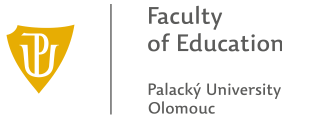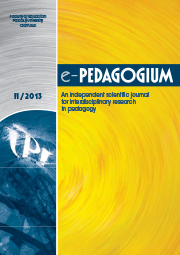e-Pedagogium 2016, 16(3):89-100 | DOI: 10.5507/epd.2016.034
How Teachers use the Monologue in the Teaching
- Mgr. Hana Navrátilová, Fakulta humanitních studií UTB ve Zlíně, doktorandka Filozofické fakulty MU v Brně, Mostní 5139, 760 01 Zlín, E-mail: hnavratilova@fhs.utb.cz
The aim of this paper is to present and to discuss research findings focused on possible forms of a teacher's monologue and communication styles of teachers at lower secondary level of elementary school. These lead to using monologues in teacher's speech while giving instructions to the class. The research is based on qualitative analysis of data from non-standardised observation of 6 teachers during their practice at standard elementary schools. The data include also field notes from direct observations and 24 transcribed video recordings. Obtained data show that the dominance of teachers talk in the class is still a powerful factor and is demonstrated in the form of embedded monologue. The causesof such a behaviour in relation to teachers' communication styles are discussed in this paper.
Keywords: instructions, communication, teachers' communication styles, monologue
Published: June 1, 2016 Show citation
References
- Alexander, R. (2016) Towards dialogic teaching. Dostupné online z http://www.misanortheast.ca/media/7365/lucy__towards_dialogic_talk.pdf.
- Beebe, S. A., Mottet, T. P. (2009). Students and Teachers. In W. F. Eadie (Ed.), 21st century communication: A reference handbook. Thousand Oaks: Sage Publications.
 Go to original source...
Go to original source... - Hirschová, M. (2013). Pragmatika v češtině. Praha: Karolinum.
- Höflerová, E. (2003). Školský dialog a jeho vliv na rozvoj řeči dětí. Ostrava: Ostravská univerzita v Ostravě.
- Janíková, M. a kol. (2009). Výzkum výuky - tematické oblasti, výzkumné přístupy a metody. Brno: Paido.
- Mareš, J. (2009). Posledních dvacet let výzkumu pedagogické interakce a komunikace v České republice (léta 1990-2009). In Pedagogická komunikace v pedagogických, sociálních a filozofických souvislostech. Hradec Králové: Gaudeamus.
- Mareš, J. & Křivohlavý, J. (1995). Komunikace ve škole. Brno: Masarykova univerzita.
- Molinari, L. & Mameli, C. (2015) Triadické interakce ve výukové komunikaci. Studia Paedagogica, 20(3), 7-19.
 Go to original source...
Go to original source... - Richmond, V. P., Wrench, J. S. & Gorhan, J. (2009) Communication, Affect, & Learning in the Classroom. San Francisco: Cafe Press.
- Šeďová, K., Švaříček, R. & Šalamounová, Z. (2012). Komunikace ve školní třídě. Praha: Portál.
- Šeďová, K. et al. (2014) On the way to dialogic teaching: action research as a means to change classroom discourse. Studia paedagogica, vol. 19, n. 4.
 Go to original source...
Go to original source... - Wiegerová, A. & Deutscherová, B. (eds.). (2016). Fórum mladých výzkumníků III. 2015: studentská magisterská a doktorandská konference IGA: sborník z konference konané 5. 11. 2015 ve Zlíně. Zlín: Univerzita Tomáše Bati ve Zlíně.
This is an open access article distributed under the terms of the Creative Commons Attribution-NonCommercial-ShareAlike 4.0 International License (CC BY-NC-SA 4.0), which permits non-comercial use, distribution, and reproduction in any medium, provided the original publication is properly cited. No use, distribution or reproduction is permitted which does not comply with these terms.






